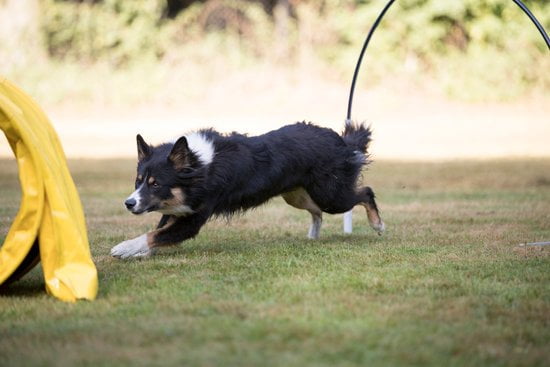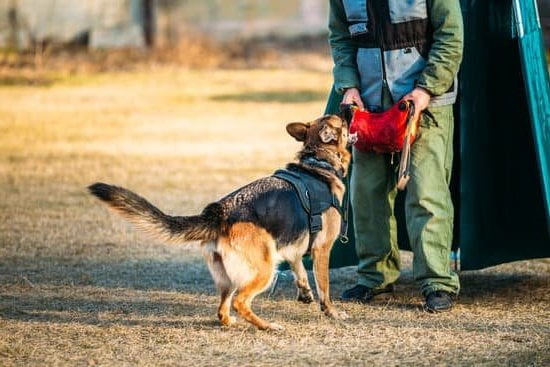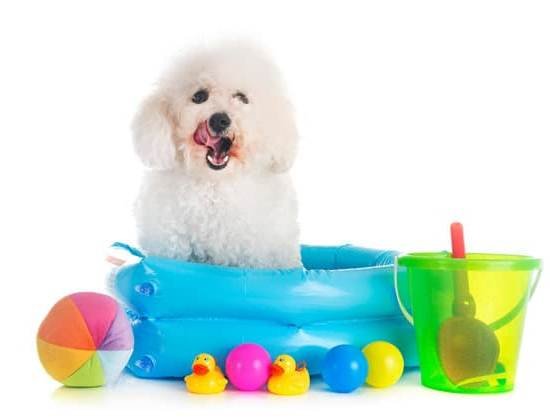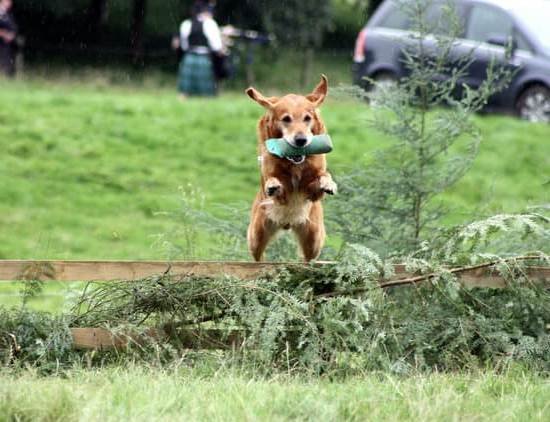Struggling with house training your dog? You’re not alone. Many pet owners face challenges when it comes to teaching their furry friends to do their business in the right spot. In this article, we’ll explore the common mistakes owners make, understand what influences a dog’s ability to be house trained, and discuss key principles for successful house training.
House training a dog can be a frustrating and time-consuming process. Many owners find themselves struggling with accidents inside the house, despite their best efforts to teach their dogs where to go. Understanding why this challenge exists is the first step in finding effective solutions.
By recognizing the common mistakes that owners make and understanding the behaviors that can influence a dog’s ability to be house trained, we can develop better strategies for successfully teaching our pets. Patience, consistency, and understanding our dogs’ needs are key principles that will be discussed in this article as essential elements of successful house training.
Common Mistakes
House training a dog can be a challenging task, and many owners struggle with it. One of the common mistakes that owners make is not being consistent with their training. Dogs thrive on routine, so inconsistency can confuse them and make it difficult for them to understand what is expected of them.
Another mistake is punishing the dog for accidents. Punishment can actually make house training even more difficult as it may create fear or anxiety in the dog, leading to more accidents.
Additionally, some owners may not provide enough opportunities for their dogs to go outside and relieve themselves. This can lead to accidents indoors, especially if the dog is not given enough time to learn where they should go potty. Finally, a lack of supervision can also contribute to house training struggles. Without proper supervision, dogs may have more opportunities to have accidents inside the house without being corrected.
In order to address these common mistakes and improve the chances of successful house training, it is important for owners to be patient and consistent with their approach. Understanding that accidents are a part of the learning process and responding calmly and positively when they occur can make a big difference in the dog’s learning experience. By avoiding these common mistakes, owners can set themselves up for success in the house training process.
| Common Mistakes | Impact on House Training |
|---|---|
| Inconsistency | Confuses the dog and makes it difficult for them to understand what is expected |
| Punishing accidents | Creates fear or anxiety in the dog, making house training more difficult |
| Lack of supervision | Dogs may have more opportunities to have accidents indoors without being corrected |
Understanding Your Dog’s Behavior
When it comes to house training a dog, understanding their behavior is crucial in achieving success. There are several factors that can influence a dog’s ability to be house trained, and recognizing these influences can help owners effectively address any challenges they may encounter. Here are some key points to consider:
1. Breed and Size: Different breeds may have different temperaments and learning abilities when it comes to house training. For example, smaller breeds may have smaller bladders and may need more frequent bathroom breaks, while larger breeds may be able to hold it for longer periods. Understanding your dog’s breed and size can help tailor your training approach.
2. Health Issues: Some dogs may struggle with house training due to underlying health issues such as urinary tract infections or gastrointestinal problems. It’s important to rule out any medical conditions that could be impacting your dog’s ability to hold their bladder or bowel movements.
3. Previous Trauma or Neglect: Rescue dogs or dogs that have been mistreated in the past may have trust issues or anxiety related to using the bathroom in a new environment. This can make house training more challenging, but with patience and positive reinforcement, these issues can be overcome.
By taking into account these factors and being patient with your furry friend, you can optimize the chances of successfully house training your dog.
Patience and Consistency
House training a dog can be a challenging process, but it is essential for the well-being of both the dog and their owners. One of the key principles for successful house training is patience and consistency. Without these two factors, it can be extremely difficult to effectively train your dog to do their business outside.
Patience is crucial when house training a dog because it takes time for them to understand and adapt to the new behavior you are trying to teach them. It’s important to remember that accidents will happen, especially in the beginning stages of training. Reacting with frustration or anger will only confuse and distress your dog, making it harder for them to learn.
Consistency goes hand in hand with patience when it comes to house training. This means establishing a routine for your dog, taking them outside at the same times every day and using the same door each time. Consistently praising and rewarding your dog when they do their business outside will also help reinforce the behavior you want from them. By maintaining this consistency, your dog will begin to understand what is expected of them.
In addition, it’s crucial that all members of the household are on board with the training process and remain consistent in their approach. Mixed signals from different family members can confuse the dog and hinder progress. With patience and consistency, house training success is achievable for any dog owner willing to put in the effort.
House Training Methods
When it comes to house training your dog, there are various approaches and techniques that you can try. Some methods may work better for certain dogs than others, so it’s important to be patient and open-minded as you explore different options. Here are some popular house training methods to consider:
1. Crate Training: This method involves using a crate to confine your dog when you are unable to supervise them. Dogs have a natural instinct not to eliminate in their sleeping area, so the crate can help with bladder and bowel control. It’s important to ensure that the crate is the right size for your dog and that it is associated with positive experiences.
2. Paper Training: This method involves designating a specific area in the house, such as a bathroom or utility room, where you place newspapers or puppy pads for your dog to use as a bathroom spot. Over time, you can gradually move the papers closer to the desired outdoor bathroom spot.
3. Scheduled Bathroom Breaks: Establishing a regular routine for bathroom breaks can be an effective way to house train your dog. Taking your dog outside at consistent times throughout the day allows them to learn when they are expected to eliminate.
It’s important to remember that each dog is unique, so what works for one dog may not work for another. Additionally, consistency and positive reinforcement are key components of any house training method. With patience and persistence, you can find the method that works best for your dog.
Remember too that seeking guidance from professionals such as dog trainers or behaviorists can be incredibly helpful if you’re struggling with house training challenges. They can provide personalized advice based on your specific situation and help you develop a plan tailored to your individual dog’s needs.
Addressing Specific Challenges
Understanding the Challenges
Older dogs and rescue dogs often come with their own set of challenges when it comes to house training. Many of these dogs may have spent a large part of their lives without proper training, leading to ingrained behaviors that can be difficult to break. Rescue dogs, in particular, may have experienced trauma or neglect, which can result in anxiety or fear-based behaviors that affect their ability to be house trained.
Approaches for Older Dogs
When dealing with older dogs, it’s important to approach house training with patience and understanding. Older dogs may have medical issues that affect their ability to control their bladder or bowel movements, so it’s essential to rule out any underlying health concerns before attempting house training. Additionally, older dogs may take longer to learn new behaviors, so consistency and positive reinforcement are key in this process.
Strategies for Rescue Dogs
Rescue dogs often require extra care and patience when it comes to house training. These dogs may have spent extended periods living in shelters or on the streets, where they had no consistent location for elimination. As a result, they may not understand the concept of holding it until they are taken outside.
When house training a rescue dog, it’s crucial to establish a routine and provide plenty of positive reinforcement. Additionally, creating a safe and comfortable environment for the dog can help reduce any anxiety-related accidents.
Dealing with older dogs or rescue dogs when it comes to house training requires a unique approach that takes into account the individual needs and experiences of these animals. With patience, understanding, and consistent training methods tailored to their specific challenges, even older or rescue dogs can’t be successfully house trained.
Troubleshooting
Identifying the Root Cause
When your dog doesn’t respond to training, it can be frustrating and disheartening. However, it’s important to take a step back and try to identify the root cause of this behavior. There could be various reasons why your dog is not responding to the house training methods you have been using. It could be due to fear, anxiety, medical issues, or simply a lack of understanding on the part of your dog.
Adapting Your Approach
If you find that your dog isn’t responding to the training methods you’ve been using, it may be time to adapt your approach. Every dog is different, and what works for one may not work for another. Consider trying different house training techniques such as crate training, positive reinforcement, or clicker training. Additionally, make sure that you are being consistent with your commands and rewards to avoid confusing your dog.
Consulting a Professional
If despite your best efforts, your dog still isn’t responding to training, it may be time to seek professional help. A qualified dog trainer or behaviorist can assess the situation and provide personalized guidance based on your dog’s specific needs and behavior. They can also help identify any underlying issues that may be hindering the house training process.
Don’t hesitate to reach out for help if you’re feeling overwhelmed or unsure of how to proceed. Remember that with patience and persistence, even the most challenging cases of house training
Seeking Professional Help
When all else fails and you find yourself at your wits’ end, it might be time to seek professional help in the form of a dog trainer or behaviorist. These professionals are trained to understand dog behavior and can provide personalized guidance and support for specific house training challenges. If you feel overwhelmed or frustrated with your dog’s inability to be house trained, working with a professional can make a world of difference.
Dog trainers are skilled in using positive reinforcement techniques to address problematic behaviors and teach new skills. They can work with you and your dog one-on-one to develop a customized training plan that takes into account your dog’s unique personality, history, and any underlying issues that may be contributing to their house training struggles. Likewise, behaviorists specialize in understanding the psychological aspects of animal behavior and can offer expert advice on addressing deep-seated behavioral problems.
It’s important to remember that seeking professional help doesn’t mean you have failed as a dog owner. In fact, it shows that you are committed to providing the best possible care for your canine companion. Whether it’s due to a lack of time, knowledge, or resources, reaching out for assistance from a qualified expert is a proactive step towards creating a harmonious relationship between you and your furry friend.
| Professional | Role |
|---|---|
| Dog Trainer | Uses positive reinforcement techniques and customized plans for individual dogs |
| Behaviorist | Experts in understanding psychological aspects of animal behavior |
Conclusion
In conclusion, it’s important for dog owners to understand that the challenge of house training a dog is common and can be frustrating at times. However, with patience and consistency, it is absolutely possible to successfully house train your furry friend.
It’s important to remember that every dog is different and may require different techniques and approaches to training. Understanding your dog’s behavior, addressing specific challenges, and seeking professional help if needed are all important steps in the house training process.
No matter how frustrated or overwhelmed you may feel, don’t give up on house training your dog. Common mistakes such as not being consistent with a routine or punishment-based methods can hinder progress, but reassurance comes from understanding that these mistakes can be rectified. By following key principles such as positive reinforcement and clear communication, along with trying different house training methods, you’ll increase the likelihood of success.
Dog owners should know that even older dogs or rescue dogs can be successfully house trained with the right approach and patience. And if you’re struggling to see progress or encountering specific challenges during the training process, seeking help from a professional dog trainer or behaviorist can provide invaluable support. So remember not to lose heart – successful house training for your beloved pet is within reach.
Frequently Asked Questions
Why Can’t I House Train My Dog?
House training a dog can be challenging for various reasons. It could be due to the dog’s age, breed, or previous living conditions. In some cases, medical issues or anxiety can also hinder the house training process.
What to Do With a Dog That Can’t Be Housebroken?
If you have a dog that seems unable to be housebroken, it’s important to first rule out any underlying medical issues by consulting with a veterinarian. Once medical issues are ruled out, consider seeking the help of a professional dog trainer or behaviorist to address any behavioral issues causing the housebreaking difficulties.
Are There Dogs That Can’t Be House Trained?
While all dogs can technically be house trained, some may require more time, patience, and consistent training than others. Factors such as age, health issues, and prior living conditions can make the house training process more challenging for certain dogs. However, with the right approach and dedication, most dogs can eventually become successfully house trained.

Welcome to the blog! I am a professional dog trainer and have been working with dogs for many years. In this blog, I will be discussing various topics related to dog training, including tips, tricks, and advice. I hope you find this information helpful and informative. Thanks for reading!





